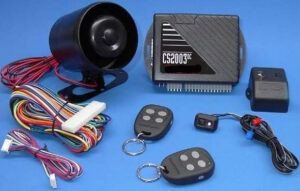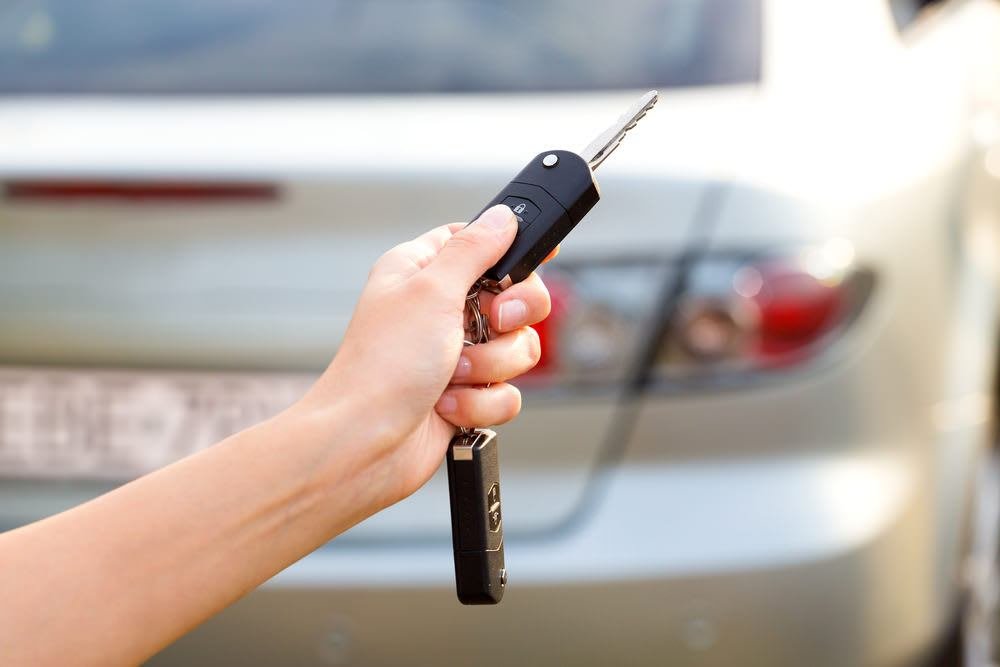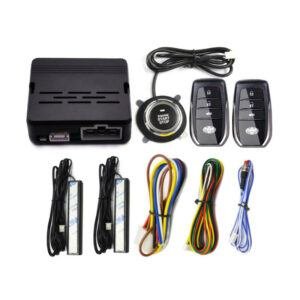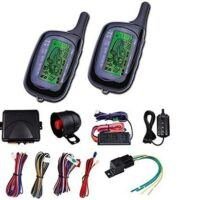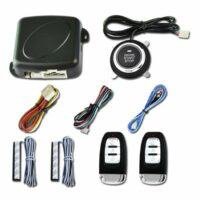You can either choose between a passive and active alarm system for your car’s security. The passive and active car alarms can be found in most vehicles across the region. They encompass the different levels of car alarm systems and determine the mode of operation. How to operate car alarm system? Keep reading to find out.
The different types of car alarm systems are operated differently. The active car alarm system can be operated remotely with a remote fob while a passive alarm activates immediately after the car key is ejected from the ignition. The key fob can also be used to operate a passive as well as an active alarm.
Advanced car alarm systems combine both active and passive features to enhance performance and usability. By getting one of these advanced alarms, motorists can switch between automated and manual operations for ease of use.
Table of Contents
Active Car Alarm System
Most car alarm systems are active. This means they require activation by the driver to arm the vehicle. This is done with the remote fob which comes along with the car alarm system. This is also one of the oldest types of car alarm systems in the world.
Using the remote fob, you’ll have to activate the alarm manually after exiting the vehicle. Active alarm systems are easy to use and quite easy to remember. By locking your car, you’re protecting it from thieves and vandals. However, some people still struggle with remembering to lock their cars. Since the operation is manual, drivers always have to remember.
But if your memory is constantly playing tricks on you then you should get one of the advanced alarm systems with both passive and active operation. We’ll be explaining how the passive alarm system works very soon.
How To Operate An Active Car Alarm System (Remote Fob)
This is the most important device in an active car alarm system. The remote fob, also known as a portable keychain transmitter, comes with most alarm systems but is only useful for active systems. This transmitter may have up to 4 keys for sending signals to the brain installed inside the vehicle. 1-way alarm systems only send commands, but 2-way systems are enhanced with a back and forth communication channel with the brain.
The sole purpose of having a remote fob is to communicate with your alarm system installed inside the vehicle. This communication process is enhanced by the sensors, receiver, and transmitter. So, be sure that all the components of your alarm system are working in good condition to avoid leaving your vehicle unprotected.
How does the remote fob work? After exiting your vehicle, press the appropriate key on the remote to lock it. If you have any smart lock device installed, the remote fob should also enable it. Advanced alarm systems will respond with a beep and flashing headlights to confirm the success of the command. This gives drivers peace of mind as they know that their vehicles are protected and safe.
You can also disarm the alarm system by pressing the unlock key on the remote fob. The remote fob serves multiple other functions such as switching the headlights on/off. You can also use it to power off a false alarm from your bedroom or office.
Advantages Of An Active Car Alarm System
Using an active car alarm system has its advantages. First, you don’t risk locking yourself out of your vehicle as you have the fob, outside the car to lock it.
Passive Car Alarm System
This alarm system doesn’t require a key to arm the vehicle. By simply exiting the car and locking the door, the alarm system is armed automatically. This system is more preferred by most drivers across the world since it doesn’t require manual input. You don’t have to remember to lock your vehicle, unlike the active alarm system. Simply exit your car and go about your business. This system provides enhanced protection for your vehicle because it becomes impossible to leave your vehicle unprotected.
This type of car alarm system is proactive, so be careful not to lock your car keys inside the car. You can combine this automatic system with an active car alarm. This allows you to switch between both alarms depending on your immediate preferences.
How To Operate A Passive Car Alarm System
Being an automated car alarm system, you don’t need to do anything. Just install and enable the
Advantages of Passive Car Alarm System
passive car alarm system comes on automatically as soon as you shut your car doors. This option gives you security in not having to worry about remembering to turn on the alarm. Another advantage to the passive alarm is the discount you receive on your car insurance. Many insurances will give you a sizable premium discount when you have a passive alarm. The reason is that your vehicle remains safe at all times because it locks automatically.
Components Of Car Alarm System And They Are Operated
A car alarm system consists of multiple components. They all work together to enhance the security of your vehicle. However, some of these components are operated independently. You need to learn about these components and how they work to maximize the car alarm.
The Brain
The most important part of a car alarm system is the brain. This is installed inside the car and communicates with the other components of the alarm to guarantee the security of your vehicle. This is also called the control unit or computer. It receives signals from the sensors attached to the body of the vehicle. Once confirmed, it sends this signal to the transmitter or makes a loud noise.
The brain works independently. However, it can also be operated using the remote fob.
Car alarm Transmitters
The car alarm transmitter is the most popular component of the alarm system. It is what the driver holds and uses to send commands to the brain of the alarm system. Car transmitters are also known as remote fobs. They have keys on the fob for different functions. Advanced transmitters have LCDs to display alerts. This is important for silent car alarm systems.
Shock Sensor
Shock sensors are another component of a car alarm system. The sensor is constantly listening in for any contact. Once the sensor picks up the slightest contact, it sends an alert to the remote fob or makes a loud audible noise to alert the driver and neighborhood. The shock sensor can be found on the body of the vehicle.
You have to keep track of the sensitivity of your shock sensors. If it’s too high, you’ll be assaulted with plenty of false alarms. However, if the sensitivity is too low, it may not send alerts on time, thereby putting your vehicle at the risk of being stolen.
Motion and Tilt Sensor
Another type of sensor installed with car alarm systems is motion and tilt sensors. They prevent the car from being towed. While we may think that cars are easily traced, be aware that over 35,000 stolen cars are lost every year and never recovered. If you want to be able to trace your car, then install a GPS tracking device.
Other components include pressure, window, and door sensors. They all send signals to the brain installed inside the vehicle. For example, the door sensor alerts drivers to any contact with your car door. Depending on your transmitter, it will send both audible and visual alarms. Likewise, the window sensor monitors contact with your car window and reports any intrusion.
Conclusively, operating a car alarm is an easy task. All you need to do is familiarize yourself with all the car alarm components installed in your car. For example, if you have a GPS tracking device, then you’ll want to leave it running constantly. Do this by programming the device with your smartphone or on the device itself.
